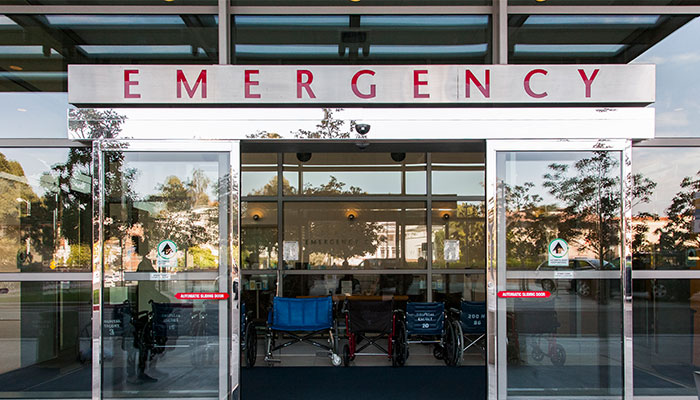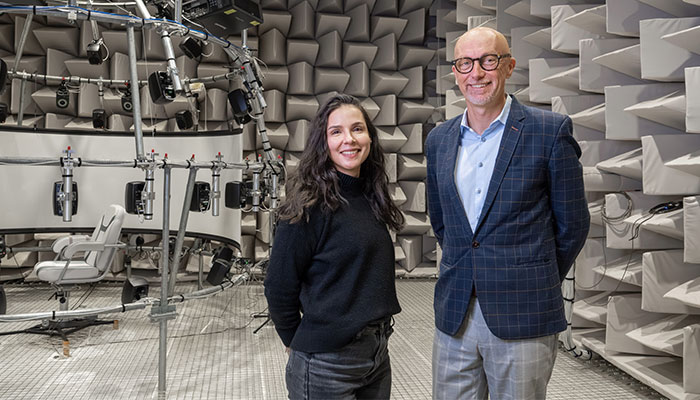Noise levels in the emergency department (ED) of a major metropolitan public hospital consistently exceeded recommendations from the World Health Organisation, with high noise levels found throughout the area.

These discoveries arise from a study into hospital noise conducted by the Australian Institute of Health Innovation (AIHI) at Macquarie University, which measured noise levels in six locations inside the ED over a 24-hour period.
The average person is likely to find a noise level of 70 decibels unpleasant, and hearing protection is required for prolonged exposure over 85 decibels.
As might be expected, the ambulance bay, with its accompanying sirens and engine noise, recorded the highest peak level of 102.81 decibels. This is equivalent to the noise level on a construction site, or that produced by a jackhammer or chainsaw.
In the ED waiting area, noise peaked at just 3 decibels lower than the ambulance bay, reaching 99.6 decibels. Average noise levels in all six areas were also consistently high, averaging 60.01 decibels and 59.4 decibels in the two treatment rooms and 59.96 decibels in the waiting room.
Noise pollution in hospitals is more than an issue of comfort. This is about healthcare safety.
Corey Adams, AIHI Clinical Research Officer and Registered Nurse, is lead author on the paper, which was published in the latest edition of Australasian Emergency Care.
“ED noise in Australian hospitals was measured in a study more than 10 years ago, and our findings show it has not improved since then,” he says.
“The previous study identified that the acute and resuscitation areas were the loudest, which you might expect with urgent activity surrounding the most critically ill patients. However, now we are seeing worsening noise levels, particularly in the ED waiting room areas.”
Why is noise a problem?
Previous research has linked noise to detrimental effects on both patient outcomes and staff wellbeing, contributing to both physiological and psychological issues.
For patients, exposure to high noise levels can result in raised heart rate and blood pressure, an increase in stress and anxiety, and a worsening of their perception of pain, which is particularly concerning for critically unwell patients.
Excessive noise also has the potential to have a negative effect on the patient’s overall experience of hospitalisation and their perception of care quality.

Mr Adams highlights the impact of noise on ED staff, noting that long working hours coupled with high cognitive load can make hospital noise a catalyst for workplace stress and burnout.
“Noise can also cause difficulty in concentrating, a reduced ability to make quick decisions, and impaired communication, all of which can have serious implications for patient care,” Mr Adams says.
“Noise pollution in hospitals is more than an issue of comfort. This is about healthcare safety.
“And while we carried out this study in one public hospital, this is by no means an isolated problem.”
Human noise the biggest contributor
While equipment and machinery certainly contribute to the noise in waiting and treatment rooms, Mr Adams says previous research suggests that the biggest source of noise is human-related.
“If you think about the ED environment, multiple conversations are taking place, people are in pain, patients and their loved ones are stressed and upset, and people are making phone calls and talking about their health issues with clinicians,” he says.
“In addition to this, people naturally respond to noisy environments by raising the volume of their own voices as they try to make themselves heard. This creates a negative and perpetuating cycle which further increases noise levels in the hospital.”
Small reductions, big wins
As awareness of the adverse effects of hospital noise grows, Mr Adams says that small reductions in noise can have substantial positive results.
Sound levels increase exponentially, making seemingly minor decreases significant. A 10-decibel drop can result in a 50 per cent reduction in the amount of perceived noise.
As part of its ongoing research into hospital noise, the team has also carried out noise testing in wards and looked at ways to improve patient sleep quality in hospitals.
- Undiscovered diamonds could be revealed by new study findings
- Study shines light on pointless Vitamin D tests
“We need to remember that hospitals are not just places to receive treatment,” Mr Adams says.
“They are also therapeutic spaces for people to recover. Patients need adequate rest and sleep during their hospital stay because it is essential for their health and safety.”
Mr Adams believes there are immediate steps that hospitals can take to reduce noise disruptions, such as addressing slamming doors and providing earplugs to patients.
“We all know instinctively that noise is a problem in hospitals,” he says.
“There’s almost an acceptance that hospitals are noisy and there’s nothing we can do about it, but that is not true.
“Hospitals should be places that increase our health and wellbeing, not worsen it.”
Corey Adams is a Clinical Research Officer and doctoral candidate at the Australian Institute of Health Innovation at Macquarie University.



